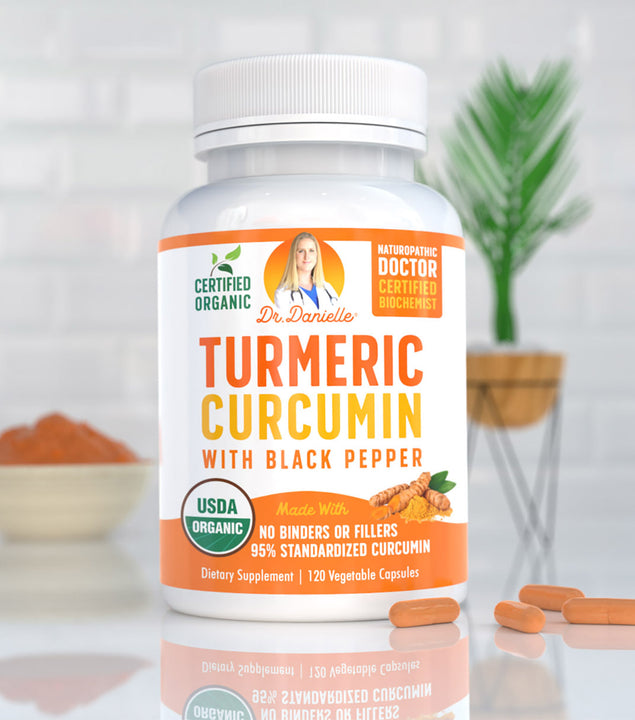When it comes to dealing with the monthly appearance of Aunt Flo, most of us rely on the two most popular options: inserting a tampon or lining our underwear with a pad. Use and throw–super convenient. But, unfortunately, they are also super bad for the environment. For reference: there are over 20 billion (yes, billion!) tampons and pads in landfills now, and these products take years and years to degrade thanks to their plastic content (1). Add to that the risk of Toxic Shock Syndrome (TSS), bacterial infections, and allergic reactions from the usage of these conventional period products (2, 3, 4, 5)… And you'd be left wondering, "Aren’t there any sustainably-made and safe alternatives to tampons or pads?”
Thankfully, there are! The next time you're cruising the crimson tide, consider picking the following alternatives to pads and tampons that may be far superior to them in many ways—better protection, prolonged use, and, most importantly, lower environmental impact.
#1 – Sea sponges

For one of the genuinely innovative and natural alternatives to pads or tampons, sea sponges (also known as the moon or jam sponges) might be one of Mother Nature's best tricks. And yes… In case you were wondering, sea sponges are precisely what they sound like–sponges that are found on the ocean floor, albeit cut to the right shape for insertion. As weird as this alternative may sound, don’t discount it till you’ve tried it!
The pros of using a sea sponge are many. Because they are 100% natural (harvested from the sea, remember?), you don't have to worry about dioxin, BPA, bleach, chlorine, fragrance, dyes, synthetic materials, or other chemicals found in man-made products. You can insert it, take it out, rinse it, and pop it right back in. Each sponge lasts surprisingly long, roughly 3 to 6 months before needing to be replaced. Many reviewers also say that they're comfortable and absorbent–lasting about as long as a regular tampon would. It's also one of the best alternatives to tampons when swimming, just because of its ability to be inserted into the vagina.
That said, it does come with its own set of cons. For example, you’re supposed to wash it out every 3 hours, which can be troublesome if you typically have a packed daily schedule. Given that they don’t come with strings, sea sponges can also prove challenging to remove once you’re done. They’re also rather delicate. That means the possibility of you ripping them by accident exists. They also deteriorate over time, potentially leaving itty bitty sponge bits in, um, your parts. This, unfortunately, could lead to infection if not removed with the help of a medical professional.
#2 – Period-proof underwear

If you don’t like the potential shifting, bulkiness, or frequent trips to the bathroom that come with sticking a pad in your underwear (let’s be completely honest, who does?)… Then period-proof underwear is one of the best natural alternatives to pads and tampons you can opt for. These period panties are typically made with a reinforced, liquid-resistant gusset designed to wick moisture (i.e. your menstrual blood) away while minimizing smells.
It goes without saying, but one of the biggest pros of period-proof underwear is its reusability. You can treat them as you would your regular underwear. Rinse them after use, put on a cold wash, and then hang dry. Simple. Also, there's the fact that it absorbs about 2 tampons worth of blood (that's a lot!) Bonus: period-proof underwear come in a wide range of sizes, styles, fabrics, and holding capacities–so there's bound to be something that strikes your fancy.
Just note that period underwear doesn't come cheap. You'll have to set aside roughly USD$24 to USD$39 per pair. But, of course, one could argue that they'll more than make up for their cost over time–given that they're reusable. And… While it's not supposed to happen, some women have also felt like they were sitting in a mess all day. Give it a try for yourself, and see how you like it. If you don't, well, there's always the option of using it as regular underwear.
#3 – Washable cloth pads

If you love pads but don’t love the adverse environmental impact they bring, washable cloth pads give you the best of both worlds. Washable cloth pads are made of several layers of soft cotton with a waterproof core. Because of this, you can banish any worries of endocrine-disrupting chemicals–typically found in many non-reusable pads and tampons–that pollute not just your body but also the environment. When you’re finished, just rinse them out and throw them in the washer. Reusable cloth pads are meant to last for 5 years, meaning that they could potentially save you money spent on the female hygiene section in the long haul.
Are there more pros? Yes, there are. These babies are also said to be more absorbent than regular pads or tampons. They also tend to come in a variety of sizes, fun colors, and patterns, and snaps on the edges help them fit in your preferred style of underwear. However, do be cautioned that some women find them to slip around (which increases the risk of leaks), especially when worn on underwear made of a slippery fabric. But there’s an easy fix to this: safety pins.
#4 – Menstrual cups

Not a fan of the visible bulk–and yet, still uncomfortable with the idea of inserting a primitive animal (aka the sea sponge) up your lady bits? Then you’ve got to try the menstrual cup: a small, silicone cup inserted into your vagina that collects your flow. Just like a, well, cup.
They hold a lot more than a tampon–you only have to dump them out every 10 to 12 hours–which means you rarely have to head to the bathroom while you're using them. Also, as long as you get them inserted correctly, they don't leak. And since menstrual cups are made out of silicone or latex, they don't have the same absorbent qualities as tampons–meaning they don't suck out moisture and leave you feeling as dry as the Sahara desert below. When you're ready to remove it, all you have to do is pull it out and wash well with hot water. And if it's not apparent by now: they are far more environmentally-friendly than pads or tampons. If cared for properly, a menstrual cup can last up to 10 years. As with sea sponges, menstrual cups are also one of the best alternatives to tampons when swimming because of its ability to be inserted into the vagina.
But… There is indeed one big downside. And that is, you need to be comfortable with sticking your fingers up your vagina and then cleaning out the cup. If you're not used to seeing what your blood and tissue look like up close and personal, the sight might freak you out at first.
#5 – Menstrual discs

Menstrual discs are similar to menstrual cups in that they are inserted into the vagina and collect period blood (instead of absorbing blood). But that's where the similarities end. Just so you know, some key differences put these alternatives to pads and tampons in a class all their own.
As you've probably already realized by now, discs are–obviously–discs rather than cups. But the placement of it inside the vagina is really what differentiates the two. While the menstrual cup is supposed to sit in the vaginal canal (where a tampon also sits), the menstrual disc sits at the vaginal fornix, which is deeper into the vaginal canal. This is an important distinction. Why you may ask… Well, because this means menstrual discs can be safely worn during sex while still blocking the flow of blood. If you're someone who gets frisky while on your period–yet is icky about the mess–then the menstrual disc is truly a no-brainer. And if it’s good enough to get naughty in bed? Then it’s definitely good enough for swimming! The discs are also hypoallergenic and made without BPA, phthalates, or latex, so you don't have to worry about your health.
There’s just one thing, though. Menstrual discs are meant to be thrown away. Like tampons, they are disposable and should not be reused (do not wash them!) Concerned about the environmental impact of that? Well, though it’s meant to be tossed away, it holds 5 tampons’ worth of blood, so you’ll still use fewer menstrual discs than you would pads or tampons–minimizing your carbon footprint.
Try Them Out and See What You Like

There's a reason conventional tampons and pads have been so popular for so many years–they undoubtedly work. But we've come a long way. There are now more alternatives than ever to traditional tampons and pads that are eco-friendly and beneficial to your health. Admittedly, they may involve a little more mess and require more effort to upkeep than the use-and-throw female hygiene products, but these are honestly tiny trade-offs. Try them out, see what you like, and make the switch. In the end, Aunt Flo and Mother Earth will both be happier you did.








